Live on the homepage now!
Reader Supported News
Probably I am all wrong about this. Probably I am simply defensive about my own slovenly habits. Probably I am envious, having never excelled in anything other than humility. I hit a brick wall in lower algebra and never got to trig. And now I’ve brought home a pitiful misshapen Christmas tree for which I paid $90. I was sent out to purchase a tree and I brought home a cripple. I had to go out and buy a special orthopedic tree stand with lead weights so it won’t fall over.
My beloved tries to reassure me that the tree is “just fine,” that Christmas is about spirit, not décor. I hate this sort of reassurance. It simply confirms my inadequacy. Other men went tree shopping two weeks ago when the first loads had arrived in New York from Quebec and they got dibs on magnificent ten-footers and negotiated the price down to $50. I am inept at negotiation and I paid full price for this embarrassment.
And I haven’t yet found a Christmas gift for the love of my life. She says, “I don’t need anything, I have you,” which I take to mean, “Anything you buy me I’d just have to return so don’t bother.” I should take out a mortgage on the apartment and go to Tiffany’s and buy her emerald earrings but, knowing me, I’d be accosted by a gentleman outside Tiffany’s who’d offer me emeralds for twenty grand, half what Tiffany’s charges, and I’d buy them and they’d turn out to be from Woolworth’s.
What to do? I wrote her a sonnet one Christmas years ago and she was touched by that but now I am even more stunned by her beauty and brilliance and don’t think I could capture that in a poem.
And then yesterday a miracle occurred, not on 34th Street but on 50th, at Radio City Music Hall. My love and I and our beautiful daughter took the C train down to see the enormous perfect tree at Rockefeller Center and to see the Christmas Spectacular with the Rockettes. Thank goodness I married a capable woman. She guided us from the subway up to the line forming for the 5 p.m. show and steered us through the Art Deco lobby to our seats (which she had bought) in mid-orchestra, and the duo-organists started playing and the light show began and I felt swept away by Christmas.
I’m from Minnesota. I’m a Christian. I was brought up to be suspicious of glitter and glamor and to prefer simple sincerity, and the Spectacular is New York showbiz glitz from beginning to end, a full orchestra in the pit, the 36 Rockettes doing their classic routines between which Santa rollicks around and there’s a 3-D video and a Nutcracker skit and a thrilling video of Santa and his sleigh flying through the canyons of Manhattan and around Miss Liberty and there are angel drones and then the Rockettes come out on a double-decker bus that goes racing around city landscapes. There’s a brief and utterly irrelevant Nativity scene, with camels and sheep, and then the Rockettes return for a finale, tall long-legged young women who have mastered trigonometric routines while tap-dancing and doing high kicks in unison.
I should’ve been repelled by this. It goes against my principles. I’m a man who goes to church on Christmas Eve and weeps as we sing “Silent Night.” I loved the whole thing with a whole heart. We exited and an usher said softly to me, “Merry Christmas,” sincerely, and I wanted to hug her.
We came home. Our daughter went to her room to FaceTime her friends. My love sat on my lap and we looked at our tree and she said, “I love you so much” (to me). It’s about cheerfulness, dear friends. God bless your house and all those whom you love. Be kind. A child is born.
READ MORE 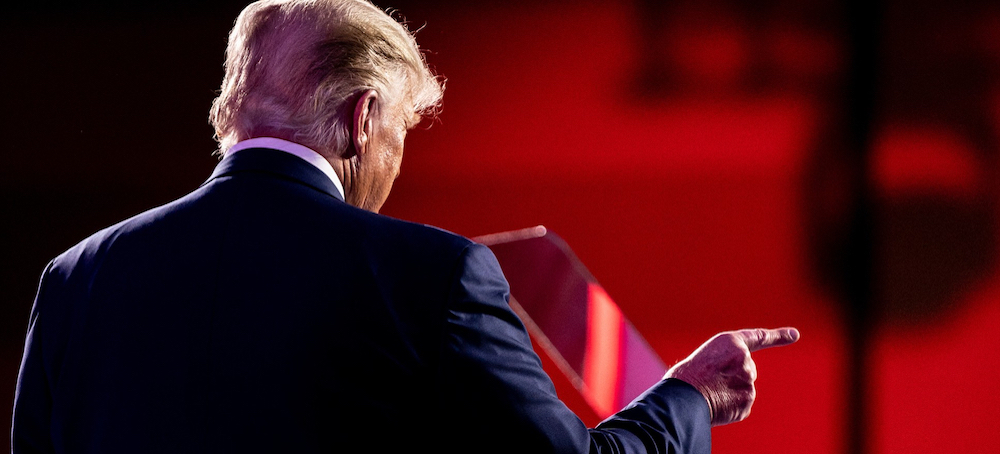 Donald Trump. (photo: Erin Schaff/NYT/Redux)
Donald Trump. (photo: Erin Schaff/NYT/Redux)
It will likely soon pass with bipartisan support. Here’s what it would actually do.
The Electoral Count Reform Act (ECRA) — crafted by senators of both parties and endorsed by leaders Chuck Schumer and Mitch McConnell — clears up many ambiguities in US law about how the presidential result is determined, and creates new safeguards against interference with the results.
After Trump lost the key swing states in 2020, he worked feverishly to try to overturn Biden’s victories in those states. He pressured practically every institution or official with some role in the process — state legislators, statewide officials, members of Congress, and the vice president — arguing that those officials should throw out statewide results, rather than respecting them.
Designed specifically with Trump’s abuses of power in mind, the ECRA goes down that list of institutions and offices and tries to make it more difficult for any of them to corruptly overturn a state’s outcome. Here’s what it does.
What’s in the Electoral Count Reform Act?
The best way to understand what the reforms do is to walk through which institution or office involved in the vote count they’d affect, one by one.
State legislatures: Trump’s team hoped in 2020 that GOP-controlled state legislators would pass new laws awarding their states’ electoral votes to him, not Biden, and he called GOP legislative leaders to the White House to try to pressure them to act. No legislatures did in fact interfere with their state results, but fears rose that they could do so next time around.
So the ECRA stresses several times that states must appoint electors in accordance with state laws “enacted prior to election day” — no mischief allowed after the fact. States have to set the rules of the game before the election, and can’t change them afterward.
State officials: Trump pressured governors and other statewide officials not to certify results showing Biden winning or to overturn the outcome — most notably in Georgia, with his urging Secretary of State Brad Raffensperger to “find 11,780 votes” for him, and his attacks on Gov. Brian Kemp (R) for certifying the result. Again, they did not act — this time.
The ECRA clarifies that the executive of each state (the governor) has a “duty” to certify appointment of electors. But just in case an election-denying governor plans some shenanigans, the ECRA also says that federal courts have oversight over these certifications, and creates a special expedited process by which courts can quickly hear challenges, which could then rapidly be appealed to the Supreme Court.
Vice president: The vice president oversees the joint session of Congress on January 6 that counts the electoral votes. That role was long understood to be ceremonial, but Trump tried to pressure Vice President Mike Pence to make a power grab and throw out state results. Pence refused, but a future veep might well be more cynical or fanatical.
So the ECRA makes it unmistakably clear that the vice president’s role in counting electoral votes is “solely ministerial.” He or she “shall have no power to solely determine, accept, reject, or otherwise adjudicate or resolve disputes” over electoral votes, the bill says. That is, no vice president has the power to do what Trump wanted Pence to do.
Congress: When Congress did gather to count the electoral votes on January 6, 2021, Trump’s allies tried to take advantage of the process for lodging objections to state results, to delay the outcome. (If just one member of the House and one senator object to a state outcome, the joint session of Congress has to break up and each chamber had to debate and vote on the objection.) This effort was largely abandoned after a mob stormed the Capitol, but sufficiently motivated obstructionists could have delayed the results for many more hours — or even days — simply by making baseless objections.
There was also a hope from Trump’s team that, if Pence did refuse to count enough state electoral votes, Biden’s electoral vote count would have fallen below the majority (270) necessary to win, and the election would have been thrown to the House of Representatives to decide, voting by state delegations. (Republicans controlled more state delegations, even though Democrats had a House majority.) But Pence held strong, so this didn’t happen.
The ECRA changes the congressional process in several ways.
First, just one representative and senator objecting can no longer break up the vote count — it will take one-fifth of both the House and Senate objecting for that to happen. (Note that it’s possible there really will be a problem with a state result sometime, so Congress is retaining the power to deal with such a matter — they’re just setting a higher bar to action.) But if the House and Senate do separate to deal with objections, time to debate and vote on each objection is limited to two hours, so no indefinite delays.
Second, the only permissible grounds for an objection are if the electors aren’t lawfully certified, or if an elector vote isn’t regularly given. And Congress must treat certifications from a state’s governor as conclusive except if courts say otherwise. This is at least an attempt to stop far-fetched objections being made as political statements, as Republicans did in 2020 and Democrats did in 2016 and 2004.
Third, if some electoral votes aren’t counted for whatever reason, the majority threshold for winning the presidency falls. To understand how this works, think about the 2020 result, where Biden won the electoral vote count 306 to 232. If Pence or Congress threw out the results in Georgia, Arizona, and Wisconsin, Biden’s total would have dropped to 269 votes, and the election may have been thrown to the House even though he still led. Under the new standard, Biden would still win in this scenario, because he’s won a majority of the votes counted.
Will the Electoral Count Reform Act work?
The reforms here seem sensible and well-crafted overall. Yet there is a line of thinking that they may not truly succeed in their goals. As Politico’s Kyle Cheney wrote in January, it is not clear the current Congress can truly bind a future Congress. That is to say, if a future Congress simply ignored these provisions, the courts may not step in to enforce them. And there were already questions about whether parts of the Electoral Count Act — the existing law that codified how Congress handles the vote count on January 6 — were unconstitutional.
Indeed, it is probably true that if a future Congress controlled by one party wanted to blatantly violate the law and steal an election, and that party was in near-total unity on that, they still very well could try, and might well get away with it.
But what the reforms really do is give a great deal of cover to people in the party who may be reluctant about election theft, but who are facing political pressure to go through with this. Ambiguities in existing law Trump and his allies sought to exploit with self-serving legal interpretations have now been cleared up. So Republican state legislators, governors, members of Congress, and the vice president can now tell a future Trump, “Sorry, my hands are tied. I can’t do what you want. The law says so.”
That’s hugely important, because as I’ve written, the main reason Trump failed to steal the election in 2020 is because enough Republican officials in these positions of authority over the results opposed his effort or at least refused to act affirmatively in support of it. Yet if the GOP continues to move right and in a pro-Trump, democracy-skeptical direction, that outcome is not guaranteed. The system only works if enough people in power agree to let it work. So the ECRA matters because it will likely help bolster the “election respecters” in the GOP, setting out rules and precedents that they may feel bound to follow, despite pressure to do otherwise.
READ MORE 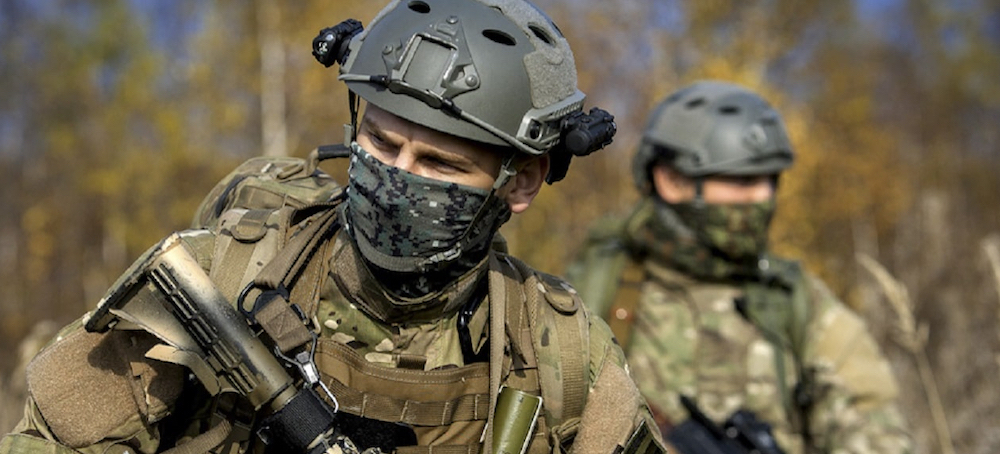 Russian soldiers. (photo: Creative Commons)
Russian soldiers. (photo: Creative Commons)
The outlet on Thursday published a sprawling investigation into the possible war crimes committed in Bucha, located outside the Ukrainian capital of Kyiv, throughout the month of March, during which Russian soldiers brutally occupied the town. They left a literal "road of death" in their wake, residents told The Times.
Several dead bodies discovered along Bucha's Yablunska Street were found with their hands tied behind their backs. Victims included men of fighting age, as well as women and children attempting to flee the invasion. Many stayed in the streets for weeks before the Russians retreated.
The International Criminal Court is already investigating possible war crimes throughout Ukraine, but Bucha residents seeking justice will need detailed evidence to make their case.
"If any Ukraine cases end up at an international court such as the ICC, it has to have a significant video component," Matthew Gillet, a senior lecturer at the University of Essex with past experience working on international criminal courts, told The Times.
The newspaper spent eight months investigating the Bucha massacres, conducting interviews in the town and extensive research stateside to pin down who exactly was responsible for the organized bloodshed.
The Times ultimately found that Russian paratroopers from the 234th air assault regiment led by Lt. Col. Artyom Gorodilov, based in the Russian city of Pskov in the west, conducted the killings in Bucha as part of a larger, systemic effort to ensure a clear path to Kyiv.
Using myriad pieces of evidence, including phone records, decoded call signs from commanders on Russian radio channels, military equipment, uniform badges, and packing slips on munition crates, the newspaper zeroed in on the 234th air assault regiment.
Bucha residents said Russian soldiers often took their phones during interrogations, prompting the outlet to obtain a Ukrainian database of all calls and messages out of the town in the month of March. Reporters found that Russian soldiers often used their victims' phones to call home to Russia, frequently placing calls only hours after the phone's Ukrainian owner had been shot dead.
The Times then used the phone numbers that Russian soldiers had dialed out of Bucha to cross-reference those soldiers' family members' suspected social media profiles, leading them to identify two dozen members of the regiment, two of whom actually confirmed to the outlet that they were paratroopers who had served in Bucha.
Horrifying photos of mass graves and videos of street executions out of Bucha shocked the world earlier this year, with Russia denying involvement. Residents who survived told The Times that they now call Yablunska Street the "road of death" to commemorate the approximately 400 people who lost their lives during the occupation.
There are roughly 50,000 alleged war crimes under investigation in Ukraine. Russia has been condemned by world leaders and top human rights groups over its actions in the war thus far. Russian President Vladimir Putin has been described by President Joe Biden as a "war criminal."
But war crimes investigations typically take years and prosecuting top Russian officials could prove extremely complicated. Legal experts have also said there's a slim chance Putin would ever stand trial due to the limitations of the international justice system.
Russia, which has rejected the allegations of war crimes, does not recognize the jurisdiction of the ICC. The court also cannot try defendants in absentia.
There are currently 123 countries that are ICC members, and Russia and Ukraine are not among them — neither is the US. But Ukraine has "accepted the court's jurisdiction over alleged crimes committed on its territory since November 2013, and in so doing, the obligation to cooperate with the court," per Human Rights Watch.
With the fighting ongoing, there are many open questions regarding accountability over the thousands of alleged war crimes in Ukraine.
That said, in May a Russian soldier who pleaded guilty to shooting and killing an unarmed civilian was sentenced to life in prison in a court in Kyiv in the first war crimes trial linked to Russia's invasion of Ukraine. A Ukrainian court subsequently reduced the sentence for the soldier, Vadim Shishimarin, to 15 years.
READ MORE 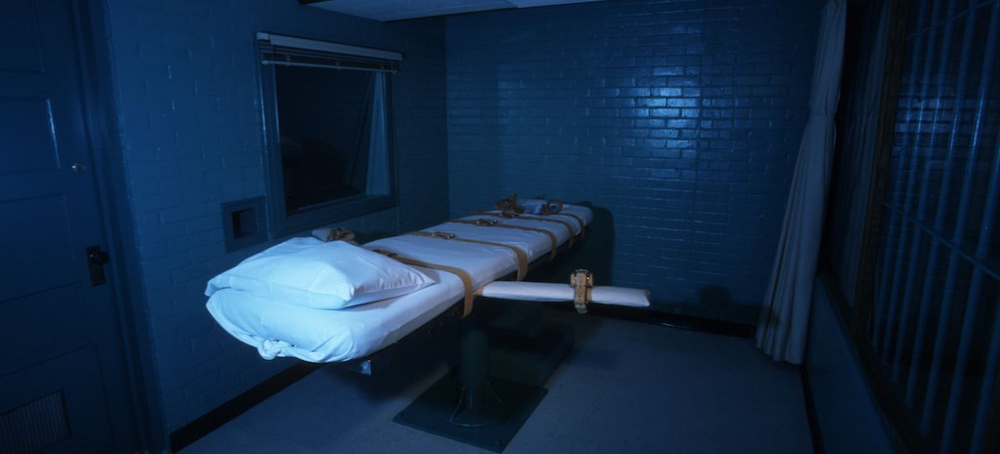 A lethal injection chamber. (photo: Joe Raedle/Newsmakers/Getty Images)
A lethal injection chamber. (photo: Joe Raedle/Newsmakers/Getty Images)
Annual review reveals that seven of the 20 execution attempts carried out this year were visibly problematic
In its annual review of US capital punishment, the Death Penalty Information Center (DPIC) reveals the astonishing statistic that 35% of the 20 execution attempts carried out this year were visibly problematic.
Several were agonisingly drawn out as officials tried to secure a vein through which to inject lethal drugs, leading lawyers to describe the process as a form of torture. Others were carried out in violation of state protocols. Some went ahead even though there were defects in those protocols themselves.
As a result of these severe hitches, seven execution attempts could be construed as having been botched. Such a high proportion of problematic executions points to a gathering storm over the practice of lethal injections, the dominant method of judicial killings in the US which this month mark its 40th anniversary.
The first lethal injection was carried out by Texas on 7 December 1982, when convicted murderer Charles Brooks was administered a fatal dose of sodium thiopental.
“After 40 years, the states have proven themselves unable to carry out lethal injections without the risk that it will be botched,” said Robert Dunham, DPIC’s executive director. “The families of victims and prisoners, other execution witnesses, and corrections personnel should not be subjected to the trauma of an execution gone bad.”
Executioners in Alabama, Arizona and Texas botched the procedures as they tried to secure prisoners’ veins. In Alabama, the past three executions in a row have been mired in this way, starting with the July execution of Joe Nathan James which saw a three-hour struggle to set an IV line.
The following two executions – of Alan Miller and Kenneth Smith – were called off because the execution team were unable to find a workable vein before the death warrant expired. In November, Alabama’s Reublican governor Kay Ivey halted all executions in the state while a “top-to-bottom review” was carried out.
In Arizona, the execution in May of Clarence Dixon ended in a bloody mess – executioners tried for 25 minutes to set the IV and resorted to performing an unauthorized “cutdown”, slicing into his groin to reach a vein.
The following month Arizona’s inability to set the lethal injection tubes resulted in a “surreal spectacle”, as the Arizona Republic described it. The prisoner, Frank Atwood, gave advice to the IV team on how to find a suitable vein in his body so that they could kill him.
In other botched procedures, Idaho, Ohio, Tennessee and South Carolina were forced to put executions on temporary hold after they were unable to carry out state protocols.
DPIC’s annual review notes that a key factor that all the botched procedures had in common was a veil of secrecy used by death penalty states to avoid accountability. Three states, Idaho, Florida and Mississippi, introduced new laws further obscuring how executions are carried out, including hiding the source of their lethal drugs to sidestep court scrutiny.
Paradoxically, while lethal injections appear to be heading towards a crisis at their 40th anniversary, taken in its entirety the death penalty in America continues to wither on the vine. Though 27 states technically still have the ultimate punishment on their books, in practice only six – Alabama, Arizona, Oklahoma, Mississippi, Missouri and Texas – killed prisoners this year.
The 18 executions that were completed in 2022, and the 22 new death sentences, are among the fewest of any year since 1991.
This week the governor of Oregon, Kate Brown, underlined the trend by commuting the death sentences of all 17 condemned inmates in the state to life without parole.
While the headline figures may be trending downwards, the systemic problems of the death penalty continued to be strongly on display in 2022. Two death-row prisoners were exonerated this year – Samuel Randolph in Pennsylvania and Marilyn Mulero in Illinois, highlighting the dangers that innocent men and women could be sent to their deaths.
By DPIC’s count, that brings the total number of exonerated death-row prisoners since 1973 to 190.
The overwhelming majority of people who were killed by death penalty states this year had glaring vulnerabilities. DPIC found that eight had serious mental illness, five were intellectually disabled, 12 had histories of traumatic childhoods, and three were killed for crimes they committed as teenagers.
READ MORE 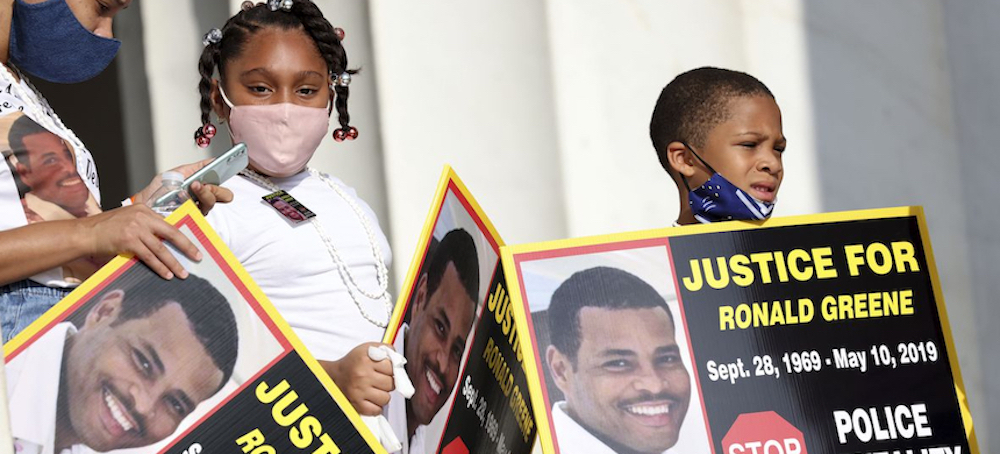 Family members of Ronald Greene listen to speakers as demonstrators gathered for the March on Washington, in Washington, D.C. (photo: Michael M. Santiago/AP)
Family members of Ronald Greene listen to speakers as demonstrators gathered for the March on Washington, in Washington, D.C. (photo: Michael M. Santiago/AP)
Authorities initially blamed deadly arrest on car crash before body-camera video showed white officers beating Greene
These were the first criminal charges of any kind to emerge from Greene’s bloody death on a roadside in rural north-east Louisiana, a case that got little attention until an Associated Press investigation exposed a cover-up and prompted scrutiny of top Louisiana state police figures, a sweeping US justice department review of the agency and a legislative inquiry looking at what Governor John Bel Edwards knew and when he knew it.
“We’re all excited for the indictments but are they actually going to pay for it?” said Greene’s mother, Mona Hardin, who for more than three years has kept the pressure on state and federal investigators and vowed not to bury the cremated remains of her “Ronnie” until she gets justice. “As happy as we are, we want something to stick.”
Facing the most serious charges on Thursday from a state grand jury was master trooper Kory York, who was seen on the body-camera footage dragging Greene by his ankle shackles, putting his foot on his back to force him down and leaving the heavyset man face down in the dirt for more than nine minutes.
Use-of-force experts say these actions could have dangerously restricted Greene’s breathing, and the state police’s own force instructor called the troopers’ actions “torture and murder”. York was charged with negligent homicide and 10 counts of malfeasance in office.
The others who faced various counts of malfeasance and obstruction included a trooper who denied the existence of his body-camera footage, another who exaggerated Greene’s resistance on the scene, a regional state police commander who detectives say pressured them not to make an arrest in the case and a Union parish sheriff’s deputy heard on the video taunting Greene with the words: “Shit hurts, doesn’t it?”
“These actions are inexcusable and have no place in professional public safety services,” the head of the state police, Col Lamar Davis, said after the indictments, adding that his agency has in recent years made improvements aimed at “rebuilding of trust within the communities we serve”.
The Union parish district attorney, John Belton, submitted arrest warrants for all five of the officers, praising the racially mixed grand jury for hearing the evidence, and saying the people had spoken.
Belton had long held off on pursuing state charges at the request of the Department of Justice (DoJ), which is conducting a separate criminal investigation. But as years passed and federal prosecutors grew increasingly skeptical they could prove the officers acted “willfully” – a key component of the civil rights charges they’ve been considering – they gave Belton the go-ahead this spring to convene a state grand jury.
That panel since last month considered detailed evidence and testimony related to the troopers’ use of force and their decision to leave the handcuffed Greene prone for several minutes before rendering aid. And for the first time in the case, a medical expert deemed Greene’s death a homicide.
The federal grand jury investigation, which expanded last year to examine whether state police brass obstructed justice to protect the troopers, remains open, and prosecutors have been tight-lipped about when the panel could make a decision on charges.
Greene’s 10 May 2019, death was shrouded in secrecy from the beginning, when authorities told grieving relatives that the 49-year-old died in a car crash at the end of a high-speed chase near Monroe – an account questioned by both his family and even an emergency room doctor who noted Greene’s battered body. Still, a coroner’s report listed Greene’s cause of death as a motor vehicle accident, a state police crash report omitted any mention of troopers using force and 462 days would pass before state police began an internal probe.
All the while, the body-camera video remained so secret it was withheld from Greene’s initial autopsy and officials from Edwards on down declined repeated requests to release it, citing ongoing investigations.
But then last year, the AP obtained and published the footage, which showed what really happened: troopers swarming Greene’s car, stunning him repeatedly, punching him in the head, dragging him by the shackles and leaving him prone on the ground for more than nine minutes. At times, Greene could be heard pleading for mercy and wailing: “I’m your brother! I’m scared! I’m scared!”
Fallout brought federal scrutiny not just to the troopers but to whether top brass obstructed justice to protect them.
Investigators have focused on a meeting in which detectives say that state police commanders pressured them to hold off on arresting a trooper seen on body-camera video striking Greene in the head and later boasting: “I beat the ever-living fuck out of him.” That trooper, Chris Hollingsworth, was widely seen as the most culpable of the half-dozen officers involved, but he died in a high-speed, single-vehicle crash in 2020 just hours after he was informed he would be fired over his role in Greene’s arrest.
The AP later found that Greene’s arrest was among at least a dozen cases over the past decade in which state police troopers or their bosses ignored or concealed evidence of beatings of mostly Black men, deflected blame and impeded efforts to root out misconduct. Dozens of current and former troopers said the beatings were countenanced by a culture of impunity, nepotism and, in some cases, racism.
Such reports were cited by the DoJ this year in launching a sweeping civil rights investigation into the Louisiana state police, the first “pattern or practice” investigation of a statewide law enforcement agency in more than two decades.
A court in Argentina has sentenced a former policeman who worked at one of the most notorious torture centres during the country's military rule to 15 years in prison.
Sandoval fled Argentina after the end of military rule and settled in France, where he became a university lecturer.
He was extradited in 2019.
Sandoval has been accused of participating in the disappearance and torture of hundreds of left-wing activists during Argentina's military rule from 1976 to 1983.
But the trial only dealt with one case: that of architecture student Hernán Abriata who was dragged from his home by police in 1976.
The left-wing activist was taken to the Navy Higher School of Mechanics, known as Esma for its initials in Spanish.
Esma was Argentina's biggest clandestine detention centre.
It is estimated that more than 5,000 men and women who opposed the military junta were taken there. Only about 100 survived.
Detainees were interrogated and tortured. Many of them were later drugged and thrown from planes into the sea.
Survivors say Mario Sandoval was one of the most notorious torturers to have worked at Esma.
They accuse him of tying prisoners to metal bedframes and torturing them with a cattle prod.
Sandoval moved to France two years after Argentina's military junta fell.
There, he became a consultant on defence and security, became a French citizen, and went on to teach for six years as an external lecturer at the Institute of Latin American Studies of the Sorbonne, one of France's top universities.
It was not until 2008 that Sandoval the lecturer was identified as the former policeman suspected of having abducted and tortured hundreds of left-wing activists.
After a long legal battle, France's top administrative court ruled that he could be extradited to his home country because the crime he stood accused of had been committed in Argentina when he did not yet hold French citizenship.
His trial in Buenos Aires started in September.
Sandoval maintained to the end that he was not the man who had seized Hernán Abriata in 1976 and showed little emotion when he was convicted.
It is still not known what exactly happened to Abriata after he was held captive. He is one of the approximately 30,000 people who disappeared under Argentina's military rule.
Six years ago, his initials and a message from him to his wife Mónica Dittmar were found scrawled on the walls of a cell at Esma, which is now a museum and memorial. It reads: "Mónica te amo" (Mónica, I love you).
READ MORE  A polar bear. (photo: Keith Ladzinski/NatGeo)
A polar bear. (photo: Keith Ladzinski/NatGeo)
Research suggests that climate change is altering the jet stream, pushing frigid air down to southern climes more frequently. But the scientific jury is still out.
Drastic changes in the Arctic, which is warming faster than anywhere else on Earth, are at the center of the discussion. Shifts in Arctic ice and snow cover are triggering atmospheric patterns that allow polar air to spread southward more often, according to recent research.
“We’ve seen the same situation basically the last three years in a row,” said Jennifer Francis, senior scientist at the Woodwell Climate Research Center in Massachusetts. “Here we go again.”
But understanding any link between planetary warming and extreme cold remains a work in progress. Many climate scientists still emphasize that even if frigid air escapes the Arctic more often, that air will nonetheless become milder over time.
The debate started with a research paper Francis co-authored in 2012. It gets revived whenever an extreme-cold event creates headlines, such as in 2021, when Texas’s energy grid was overwhelmed by a storm that killed 246 people.
Francis’s research hypothesized that Arctic warming was reducing the contrast between polar and tropical temperatures, weakening the jet stream, a band of strong winds in the upper atmosphere that helps guide weather patterns. A weaker jet stream would allow weather systems to more easily swing from the Arctic down into mid-latitude regions that typically have temperate climates.
Since then, observations of jet stream patterns have not confirmed the hypothesis, said Daniel Swain, a climate scientist at UCLA. But the research inspired a flurry of follow-up studies that Swain expects will eventually clarify a link between climate change and cold-weather outbreaks.
“We’re 10 years into this conversation and there’s still a lot of mixed feelings in the scientific community, though there is some tantalizing evidence that there is some ‘there’ there,” said Swain, who works at UCLA’s Institute of the Environment and Sustainability.
A 2021 study published in the journal Science is one new point of debate. The research explains what author Judah Cohen called “a physical foundation” linking Arctic warming and changes in atmospheric patterns.
It focuses on the polar vortex, an area of low pressure typically parked over the North Pole and surrounded by a band of fast-flowing air. Cohen likens it to a spinning top — when the polar vortex is strong, that band of air spins in a tight circle.
Increasingly often, Cohen found, the polar vortex weakens like a wobbling top. That gives the circulating air a more oblong, extended shape and encourages bursts of Arctic air to spread southward.
While the polar vortex took on that stretched shape for about 10 days a year in 1980, in recent years, it has been occurring more than twice as often, said Cohen, director of seasonal forecasting at Atmospheric and Environmental Research.
The research links that to changes in the climate around the Arctic: In the Barents and Kara seas north of Russia and Scandinavia, the waters have warmed and ice has melted, whereas in Siberia, there’s been a cooling trend from increases in snowfall induced by climate change.
Some scientists say that a longer and more thorough record of data is needed to back up Cohen’s research and that there isn’t enough evidence to blame Arctic warming for cold outbreaks at lower latitudes.
Swain predicted that scientists will make sense of the atmospheric dynamics but that it could take years.
“It’s one of the most complicated topics in climate science,” Swain said.
In the meantime, researchers are confident that cold extremes will follow larger global trends and gradually get warmer, though they still will have significant impacts on places unaccustomed to the cold.
“We’re going to break a lot of records this week, for sure,” Francis said. “The likelihood of breaking cold records is decreasing, and we see that in the data.”
And Cohen said data suggests that relief from the cold across the United States is near: Weather models agree that the polar vortex is going to snap back from its oblong shape by early January, trapping the most frigid air around the North Pole once again.
Follow us on facebook and twitter!
PO Box 2043 / Citrus Heights, CA 95611


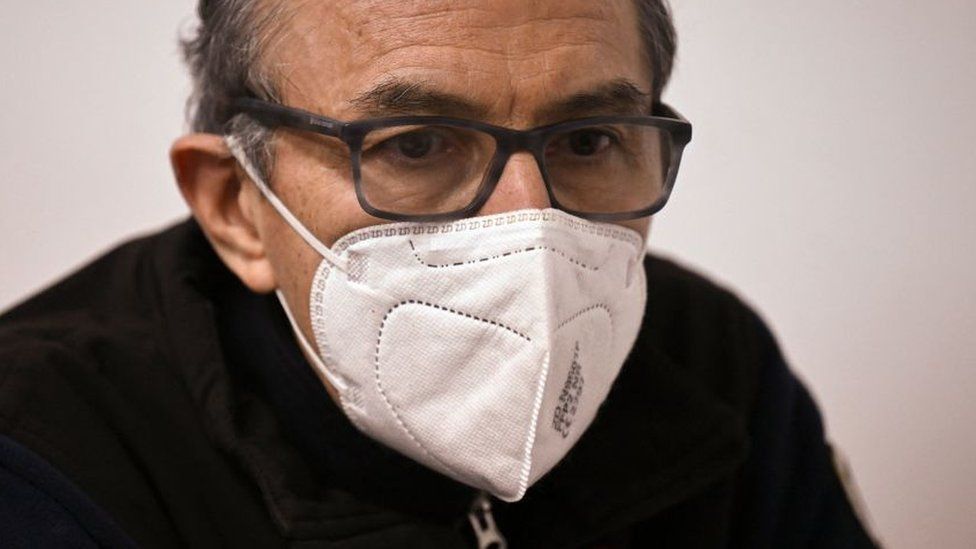

No comments:
Post a Comment
Note: Only a member of this blog may post a comment.